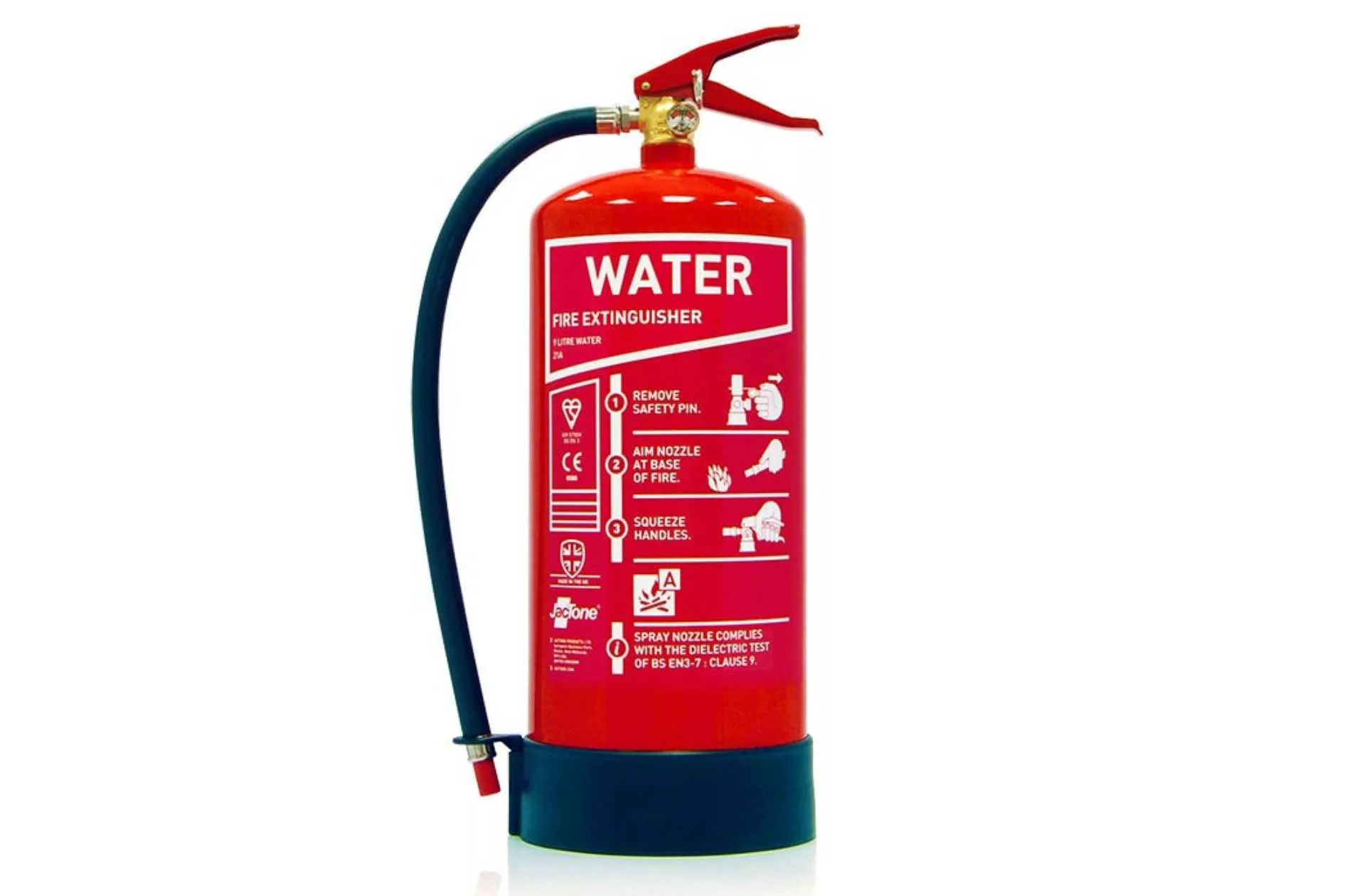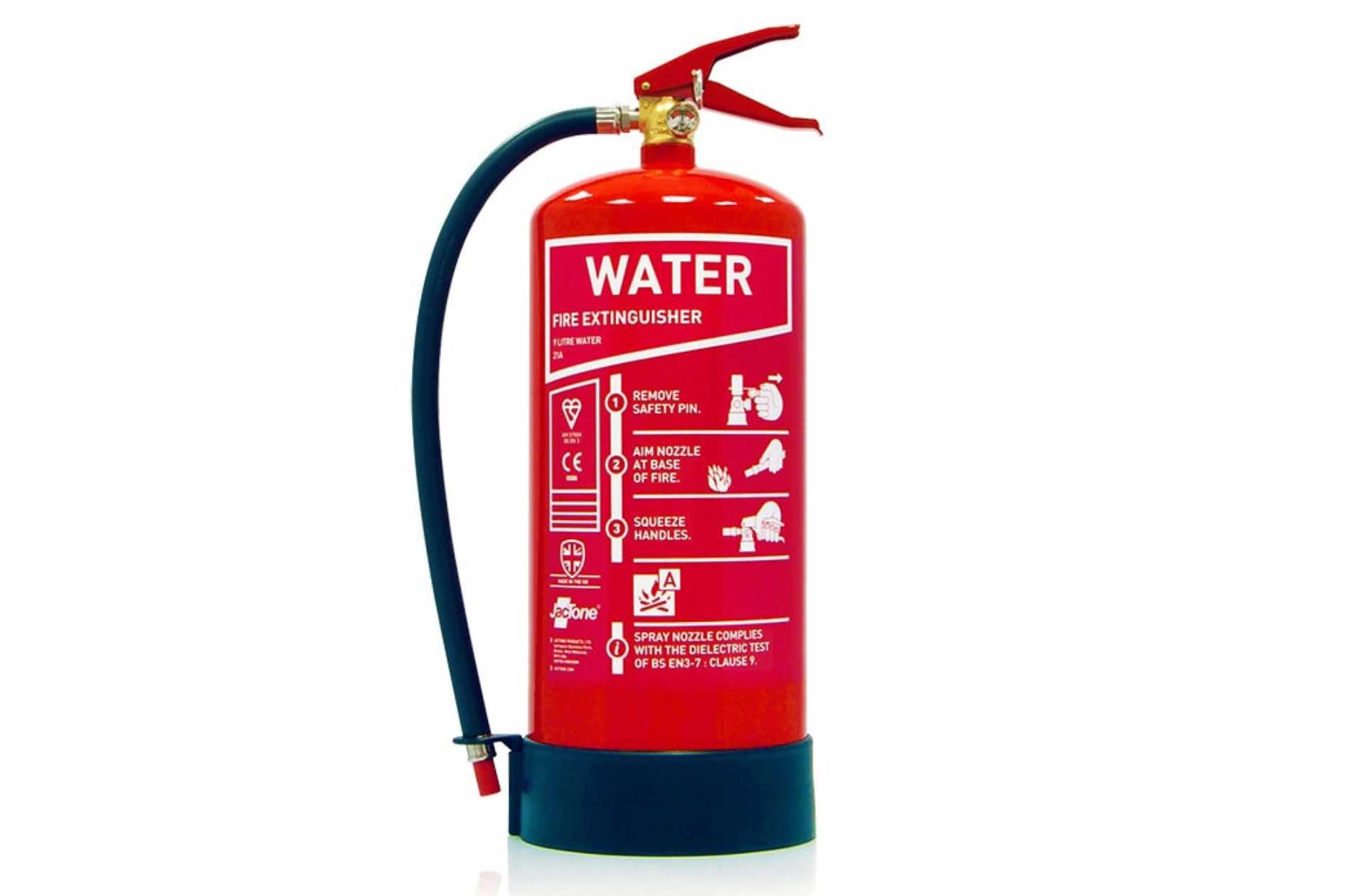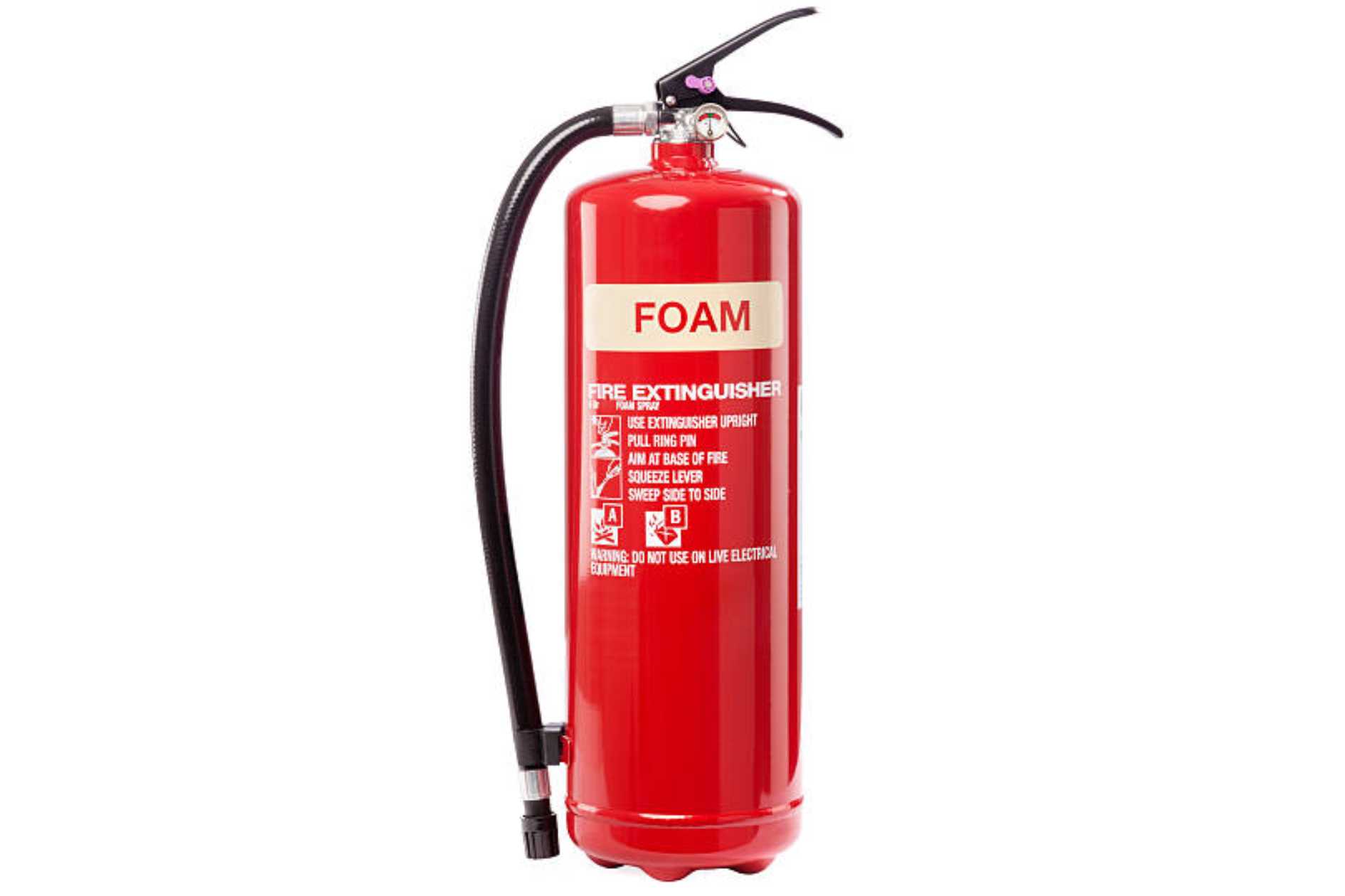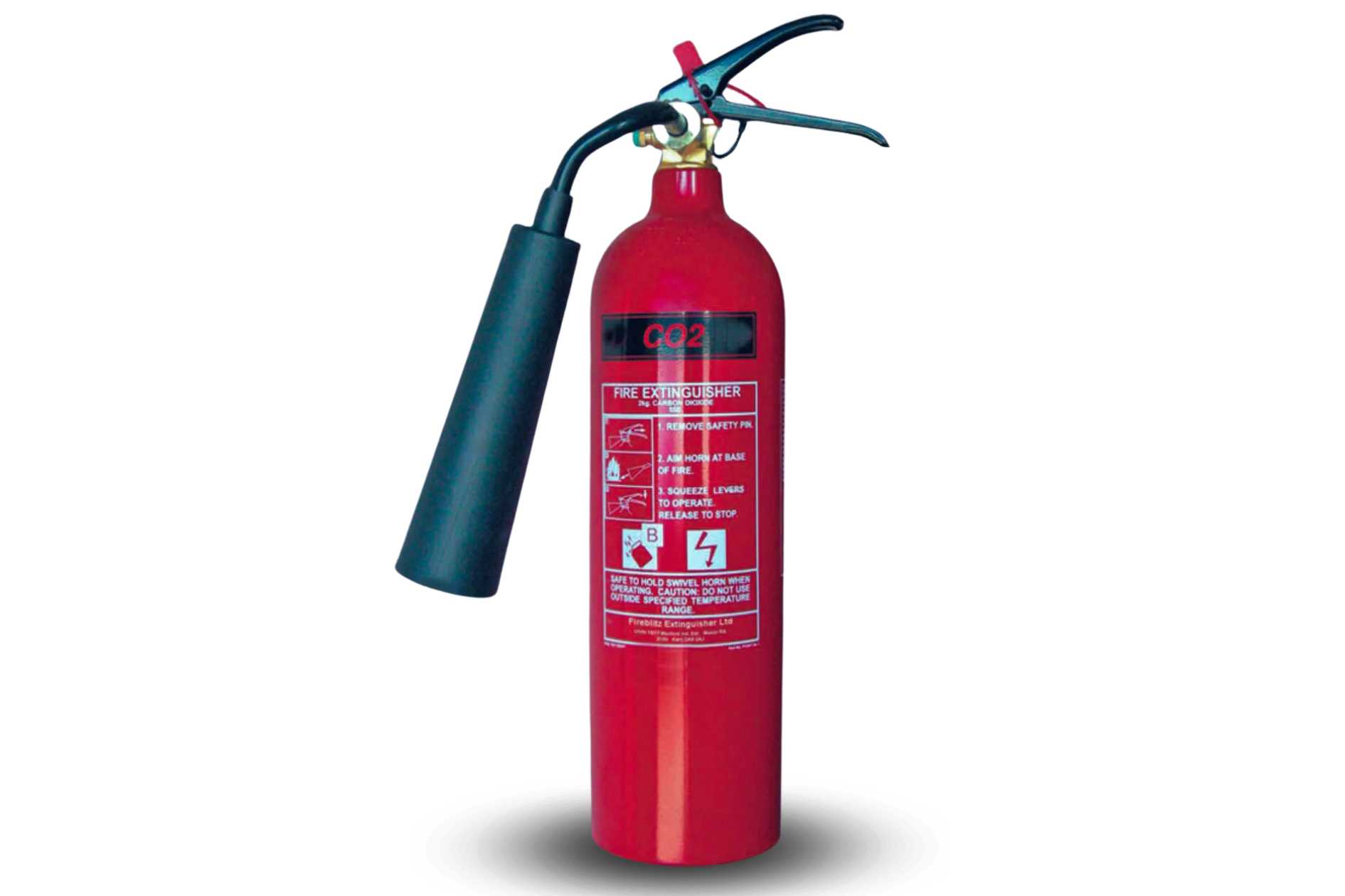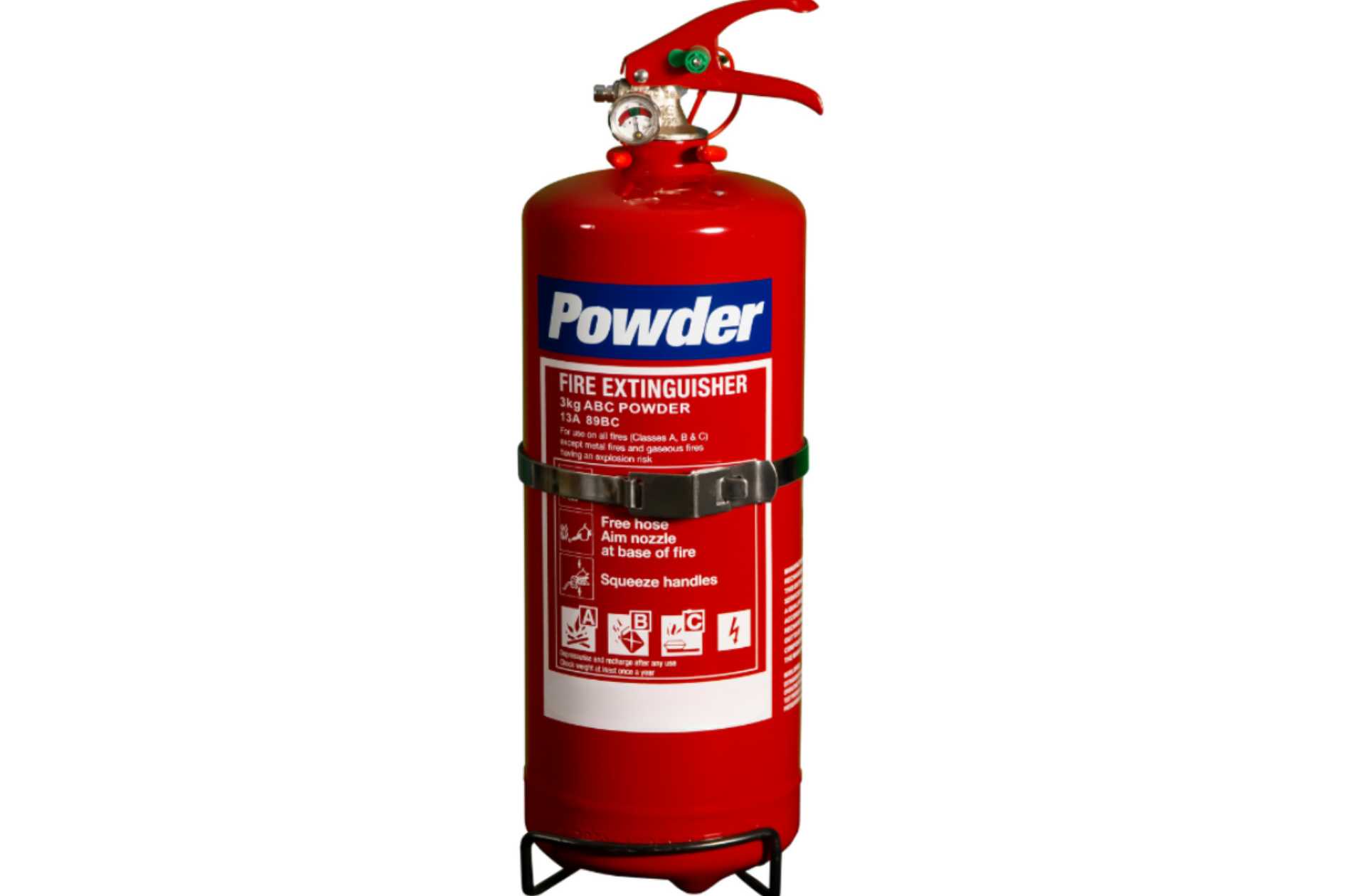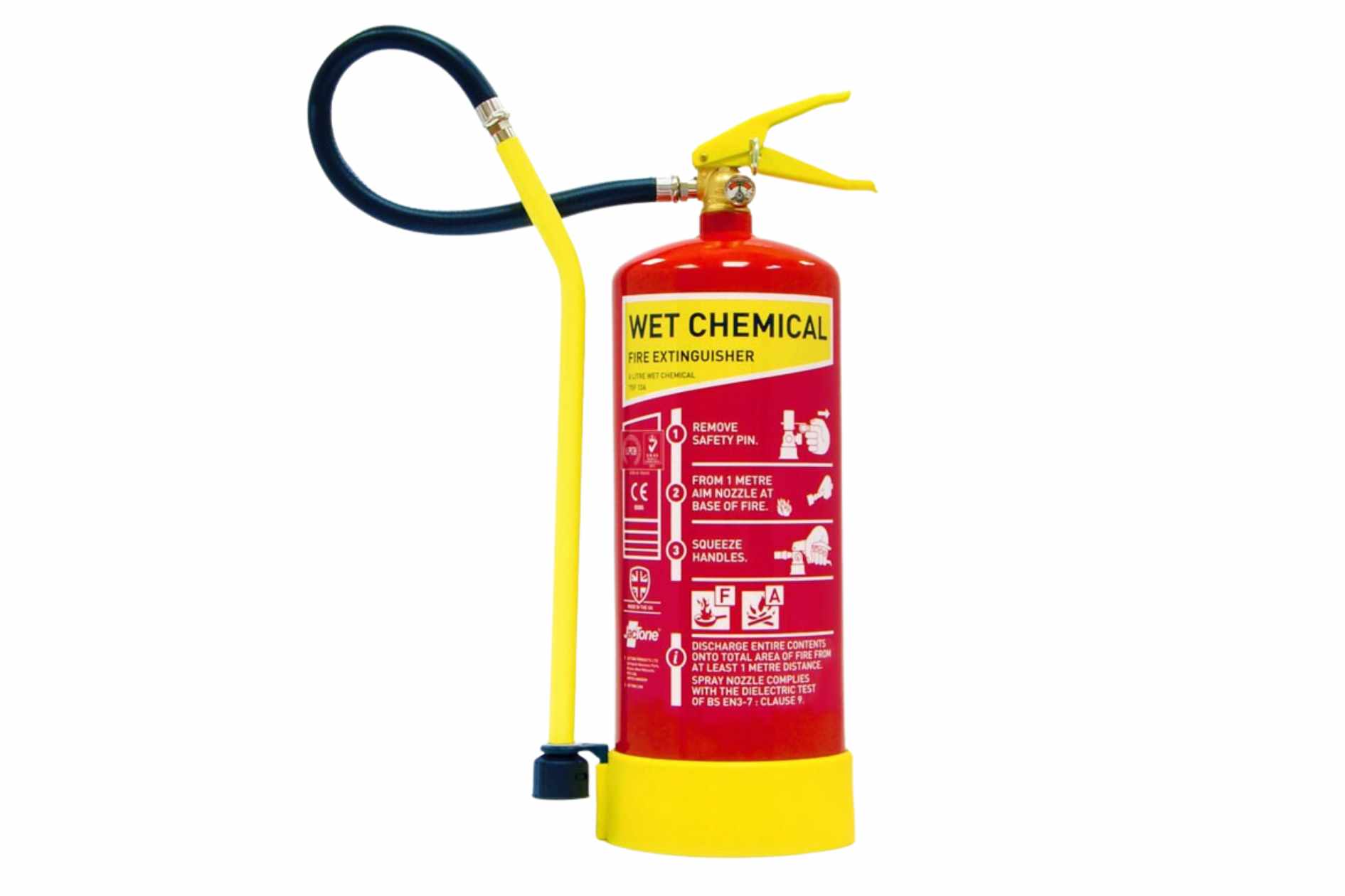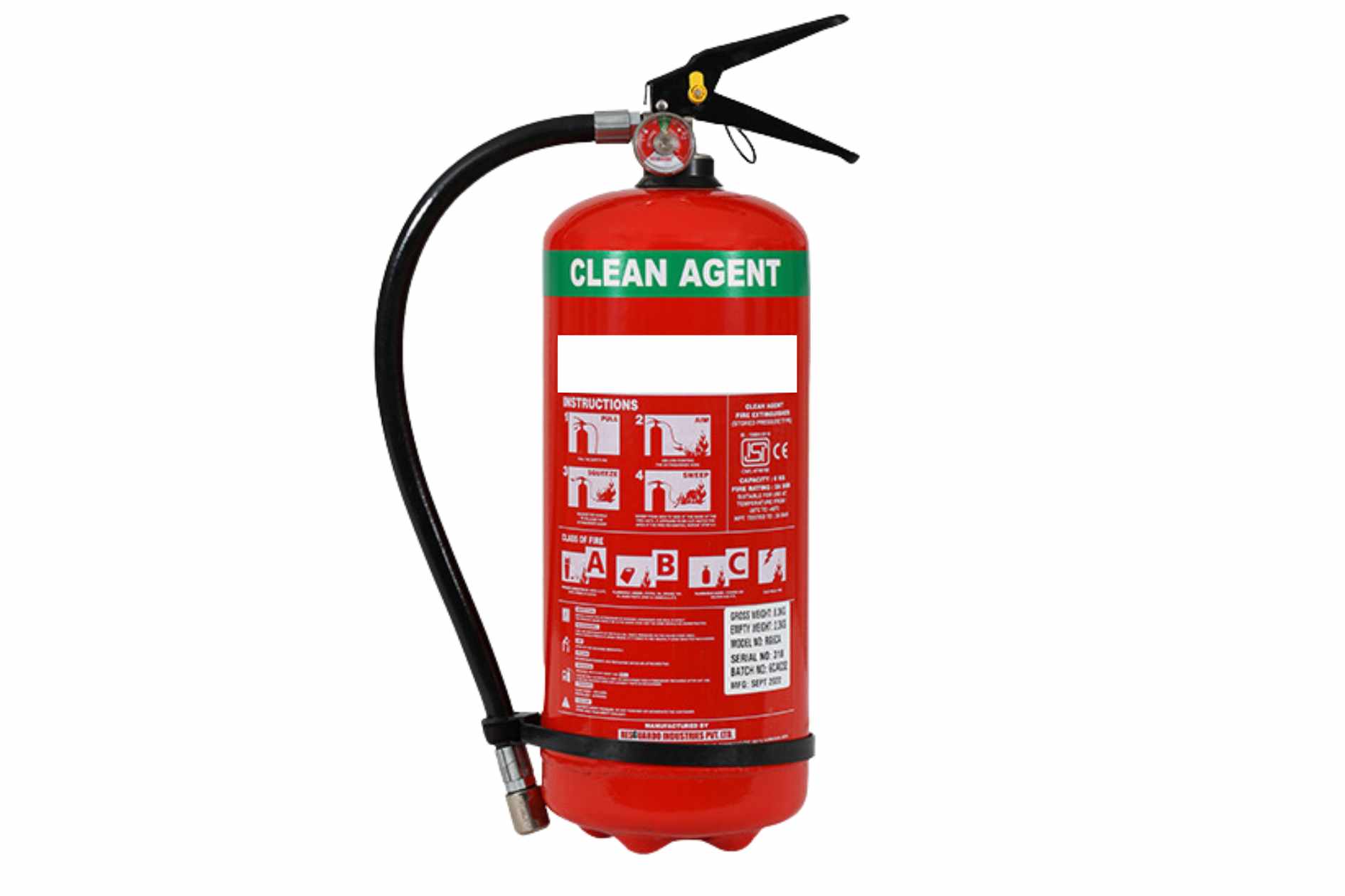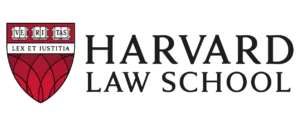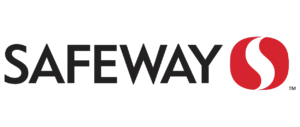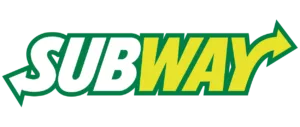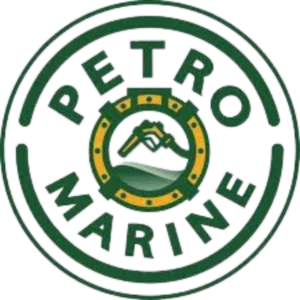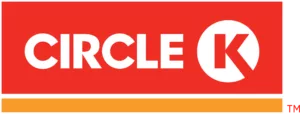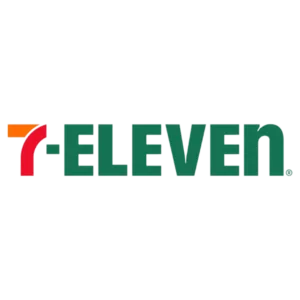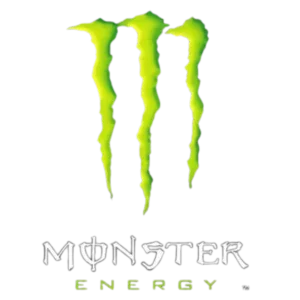When a fire strikes, every second counts. Are you prepared with the right fire extinguisher type?
Have you seen red metal cylinders with a nozzle and a hose fixed on a wall during your last visit to a mall, gas pump, or public place? That’s a fire extinguisher!
Many of us often wonder, “Are they ever used?” The answer is absolutely YES! Fire extinguishers are an essential component of fire safety equipment, designed to help control or extinguish small fires effectively..
Knowing the types of extinguishers and which ones to use in when responding to an emergency situation is important. Hence, in this blog, we will look at some fire extinguisher types and their uses.
Water and Water Additive Extinguishers
Let’s understand a water-based fire extinguisher:
Color Code: Red
These are water-based extinguishers, which are used more frequently. Their red label makes them easily distinguishable based on their composition.
Uses
Water and water-additive extinguishers are best for Class A fires. They are best for dealing with fires caused by solids, like paper, fabric, wood, and furnishings, which are usually found in homes, offices, and other places with organic material.
Limitations
As it is clear that this extinguisher is only for solids, it cannot be used to combat electrical fires or fires that involve flammable liquids, because this can cause extra damage and electric shock in case of an electrical fire. In contrast, it can further spread due to flammable liquids.
Foam Extinguishers
Color Code: Cream
Foam extinguishers are identified by their cream-colored label. They are best and widely used in both domestic and industrial settings.
Uses
This fire extinguisher type is convenient for Class A (paper, wood, textile) and Class B fires (flammable liquids like petrol, oils, and solvents).
The foam works as a cooling agent, forming a barrier that prevents the fire from spreading and limiting the oxygen that fuels the flames, making them an ideal choice for kitchens or workshops.
Limitations
Although they seem versatile, they still cannot be used for electrical fires because they consist of a water base. Using this would increase the chances of fire spread and put you at risk of getting shocked.
Carbon Dioxide (CO2) Extinguishers
Color Code: Black
Next on the fire extinguisher types list is the black-labeled extinguisher, which is used in the presence of electrical fires.
Uses
The CO2 extinguisher is effective for putting out fires of Class B (flammable liquids) and Class C (electrical fires).
It displaces oxygen around the fire area and cools it down, preventing the fire from reigniting or even spreading further.
Moreover, CO2 does not have any residue due to its non-conductive nature, making it ideal for electrical equipment.
Limitations
One significant limitation of this fire extinguisher type is that it is extremely cold. When it comes in contact with human skin, it can cause severe damage, like frostbite. Therefore, one should avoid handling the nozzle directly while using the extinguisher.
Ensure you are trained to handle the extinguisher; if not, consider getting the fire extinguisher training from Cognno. In addition, make sure it is not for Class A fire.
Dry Powder Extinguishers
Color Code: Blue
Dry powder extinguishers are labeled in blue and are versatile to be used in both industrial and domestic settings, where there are chances of multiple kinds of fire.
Uses
Dry powder extinguishers are versatile, as they can handle Class A, Class B, and Class C types of fire. They are commonly used in areas where flammable gases like propane and butane are stored. Moreover, they can also tackle Class D fires (flammable metals, magnesium, or lithium).
Limitations
Although this extinguisher is highly effective in putting out all kinds of fires, it leaves a sticky residue afterwards that can severely damage electrical equipment and machinery.
Moreover, the residue is hard to clean, especially in sensitive places like laboratories or offices with a lot of electrical equipment.
Wet Chemical Extinguishers
Color Code: Yellow
Wet chemical extinguishers, characterized by yellow labels, are specifically designed for use in commercial kitchens.
Uses
These extinguishers are mainly made to combat Class K fires, which involve cooking oils and fats used for cooking.
Class K fires are common in kitchens near deep frying areas. Moreover, the wet chemical agent works by cooling the oil and creating a layer that suppresses the fire.
Additional Uses
These extinguishers can also be used to put out Class A fires, which involve ordinary yet combustible materials.
Clean Agent Extinguishers
Uses
Clean agent extinguishers are often used in environments with sensitive electronic equipment, such as data centers, hospitals, or research facilities. They use a gaseous agent that is non-conductive and non-corrosive.
Common Agents
Common cleaning agents include halon alternatives like FM-200 and FE-36, which are highly effective in extinguishing Class B and C fires. These extinguishers remove heat from the fire and prevent oxygen from reaching the flames.
Limitations
Although clean agent extinguishers are ideal for electrical fires and delicate equipment, they are typically more expensive than traditional extinguishers and require regular maintenance to ensure their effectiveness.
Fire Extinguishers: Classifications Course
Which Fire Extinguishers Are Suitable for Different Fire Classes?
Once you understand fire extinguisher types based on fire classification, you can decide which one you need for your space. Here’s a quick tabular view of all types and their uses that we have discussed.
| Fire Class | Suitable For | Type of Fire Extinguisher | Explanation |
| Class A | Paper, Wood, Textiles | Water Extinguishers | Effective at cooling and suppressing flames by removing heat. |
| Foam Extinguishers | Provides cooling and smothering to stop fire and prevent re-ignition. | ||
| Dry Powder Extinguishers | Can handle Class A, B, and C fires but leaves residue. | ||
| Wet Chemical Extinguishers | Primarily for Class F, but also effective on Class A fires due to cooling properties. | ||
| Class B | Flammable Liquids (e.g., petrol, oils) | Foam Extinguishers | Smothers liquid fires and cools the fire with a foam barrier. |
| Dry Powder Extinguishers | Effective on flammable liquids, but leaves residue. | ||
| Carbon Dioxide (CO2) Extinguishers | Non-conductive, leaves no residue, ideal for liquid and electrical fires. | ||
| Class C | Flammable Gases (e.g., propane, butane) | Dry Powder Extinguishers | Suitable for gas fires by interrupting the chemical reaction of the fire. |
| Class D | Flammable Metals (e.g., magnesium, lithium) | Dry Powder Extinguishers | Specialized powder extinguisher that cools and suppresses flammable metal fires. |
| Class F | Cooking Oils and Fats (e.g., deep fryers) | Wet Chemical Extinguishers | Designed to cool and smother cooking oil fires, preventing re-ignition. |
| Electrical Risks | Electrical Equipment (e.g., computers, circuit breakers) | Carbon Dioxide (CO2) Extinguishers | Non-conductive and leaves no residue, making it safe for electrical fires. |
| Dry Powder Extinguishers | Versatile for electrical and other fires, but leaves a residue that can damage electronics. |
How to Use a Fire Extinguisher
Knowing how to use a fire extinguisher is crucial in emergencies. Having the right fire extinguisher type is good, but knowing how to use it is excellent. Here’s the most commonly used technique:
PASS Technique
Consider the PASS technique your go-to guide for safely using any fire extinguisher type. It stands for “Pull Aim Squeeze Sweep.”
1. Pull the pin
The first step is to grab the extinguisher and locate the pin at the top of the cylinder to prevent the extinguisher from going off accidentally. You must pull that pinout, which needs strength, so pull it out firmly.
The extinguisher won’t work without removing the pin. Moreover, make sure to keep the pin in a safe place so you don’t lose it.
2. Aim the nozzle
Stand a few feet away from the fire area and direct the nozzle at the base of the fire, not the flames, because you have to combat the root cause, not the consequence. For instance, you must target the burning fuel in a Class B fire.
As discussed earlier, different types of fires need different fire extinguishers. For example, if it’s a Class B fire (flammable liquids like petrol or oils), you’ll want to use a foam or CO2 extinguisher, not just water.
3. Squeeze the handle
Now is the time to use the extinguisher. Firmly squeeze the handle to release the extinguishing agent.
However, when the fire becomes large or the extinguisher isn’t working in unfortunate circumstances, don’t hesitate to evacuate the area and call emergency services. Your safety comes first!
4. Sweep the nozzle
Once the agent is all over the material and starts flowing, sweep the nozzle from side to side, covering the entire firebase and ensuring the fire doesn’t spread.
Fires often reignite if even a tiny portion of the fuel is exposed. Sweeping the nozzle over the entire fire ensures no part of the source is left burning.
Take your time to make sure the fire is completely out. Sometimes, it’s easy to think it’s gone when it hasn’t been smothered.
Conclusion
Accurate knowledge of the fire extinguisher types is crucial to handling emergencies effectively. However, knowledge alone is not enough; you need proper training to operate the extinguisher. So don’t wait until it’s too late!
Visit Coggno today and explore the best suitable fire safety training for a secure future. Take the first step now and enhance your emergency response skills.

